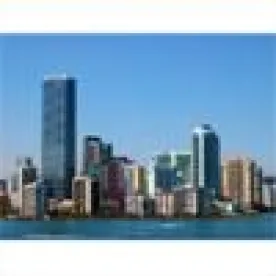The concept of art in public places is well-established in the United States. As early as the 1930s, the federal government created New Deal programs that paid artists to create works of art for display in municipal buildings and other public civic properties. Similarly, Miami-Dade County has required since the 1970s that art be provided in the amount of 1.5% of total construction costs for any governmental development, including private development on public land. The County’s program has yielded several notable works of public art, including the “Red M” by Roberto Behar and Rosario Marquardt at the Riverwalk Metromover station and “Slide Mantra” by Isamu Noguchi. The recently installed floors in Terminal D at Miami International Airport are also a product of the County’s program. Other local jurisdictions, including the City of Miami Beach, have more recently adopted similar programs.
Earlier this year, the City of Miami adopted a requirement that public art be installed in new public buildings, but declined at that time to extend the program to private development in the City. However, the City is now considering a new ordinance that would extend such requirements to all private development, not just private development on public land, which would therefore make the City’s program the most expansive in South Florida. If adopted, the new ordinance would require public art to be provided at new privately constructed buildings that is equal to up to 1.25% of the total construction cost or, in the alternative, a payment of up to 1% of construction costs may be made to an art fund.
Many real estate developers view these programs as yet another regulatory burden that drives up the costs of new development in South Florida. To be sure, art in public places programs add to total construction costs. However, with some creativity, there are opportunities to reduce the cost of compliance. We have been involved in many private developments subject to Art in Public Places, and in some cases, the County’s 1.5% requirement actually increases the total development cost by less than 0.5%. Furthermore, public art is not simply red tape–it can potentially increase the value of the development. This, too, should be considered when developing a strategy for compliance with any applicable public-art regulations.





 />i
/>i

